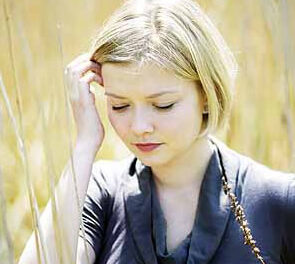The opening night concert of the Asheville Symphony Orchestra was dubbed a Russian Spectacular. Waltz No. 2 from Dmitri Shostakovich’s Suite for Variety Orchestra opened the night, and the expansive Symphony No. 2 of Sergei Rachmaninov concluded the program. In between was the Trumpet Concerto of Alexander Arutiunian, who is distinctly Armenian, not Russian. However, Arutiunian was educated in Russia, and the concerto’s cadenza was written by the late great Russian trumpet player Timofei Dokshizer, a friend of Arutiunian. And while guest artist Vladislav Lavrik was born in the Ukraine, he is the principal trumpet of the Russian National Orchestra. So we will accept the evening as mostly Russian. And the choice of program made it definitely spectacular.
The Arutiunian concerto is written as one continuous movement, but has a distinct episodic structure. A recitative by the trumpet, answered by the orchestra, opens the work. The strings then state the principal theme, which is elaborated and embellished by the trumpet, but not in a usual sonata allegro form. After an episode initiated by the clarinet, the principal theme returns. A ravishing slow section follows, displaying the trumpet’s ability to shimmer sumptuously. The latter sections include some murderous double tonguing, the afore-mentioned Dokshizer cadenza, and a final recapitulation of the principal theme.
Lavrik is a no-nonsense, young (not yet 30) trumpet player with a fine technique. He showed a lot of musical sense in his interaction with the orchestra during the virtuoso piece. The counterpoint sections involving trumpet and woodwinds were especially fine.
Rachmaninov’s second symphony is an hour-long festival of some of his most beguiling melodies and most sumptuous harmonies. He makes no apologies about composing an unabashedly romantic work in the twentieth century. Music Director Daniel Meyer chose the complete, uncut version of the work and conducted with a great deal of insight. Waves of rich color swept over Thomas Wolfe Auditorium. It was as though pounding surf was creating a rainbow out of colors from Wassily Kandinsky’s palette.
The musicians were all producing lush tones. Unfortunately, they were not all producing the tones in a coordinated fashion. Sections featuring a single woodwind solo instrument worked well — the required emotional passages stood out against a background of lush string orchestration. But in sections featuring several woodwinds or the entire woodwind choir, the players had not negotiated their individual differences about the rubato. They followed their own rhythmic muses, and the result was conflicting internal motion. A woodwind sectional rehearsal devoted solely to the Rachmaninov might have provided some needed preparation, but orchestral economics do not allow for the expense of sectional rehearsals.
Other sections of the orchestra were also not always internally synchronized. The bowing in the cello section lacked uniformity, and several times in the Adagio I saw cellists using their C string while others were using their D string to produce the same note. That is not the way to get a blended string tone.
In both the Rachmaninov and in the opening Shostakovich piece, Maestro Meyer conducted with a fine sense of the dance rhythms used by both composers. It made me long to see Meyer conducting the two grand dance scenes from Tchaikovsky’s Eugene Onegin, but only if he is allowed enough rehearsal time with the orchestra so that they can get their ensemble together better than in this concert.











